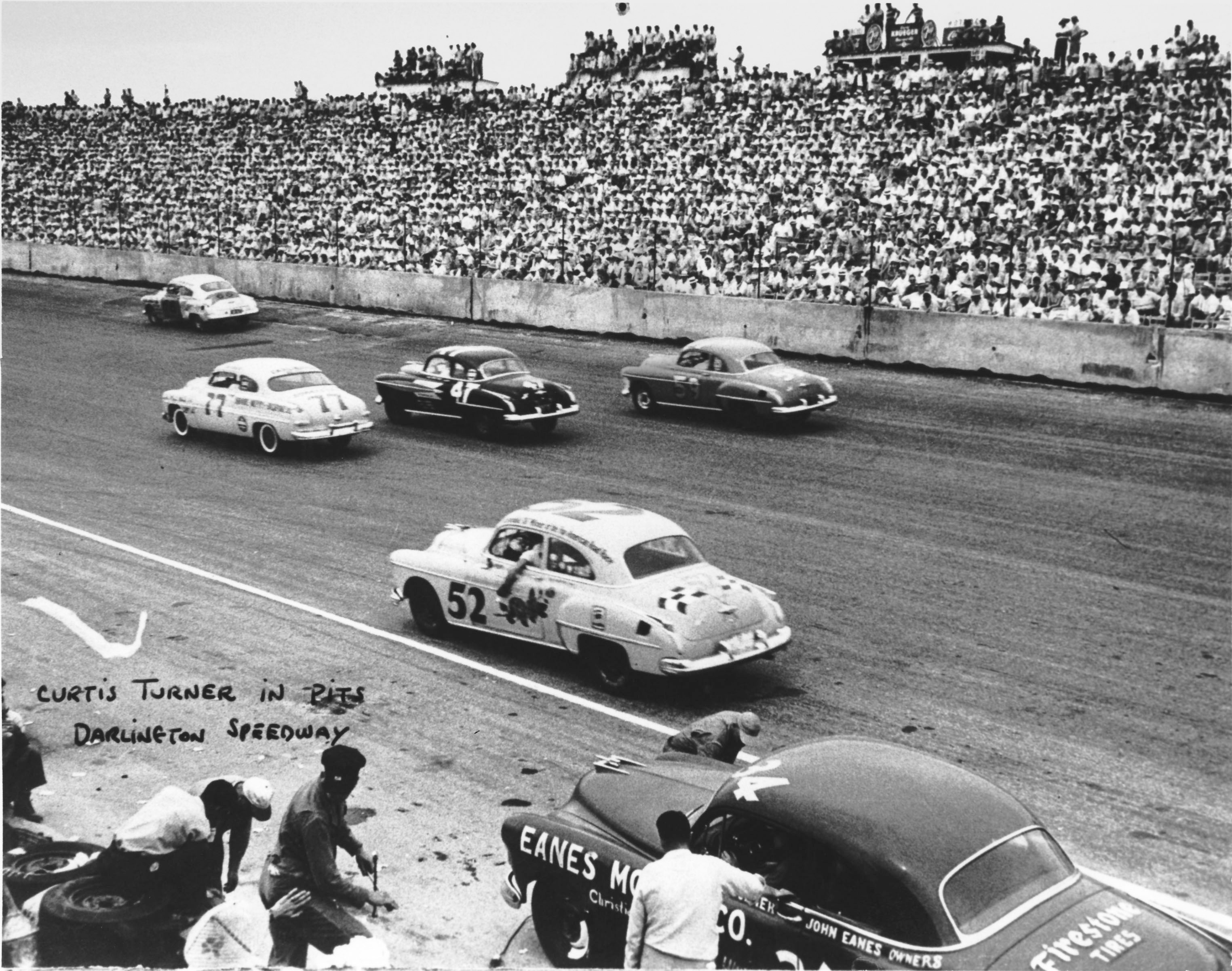NASCAR’s Oldest Superspeedway
by Tom Jensen May 05, 2022
Historic Darlington Raceway hosted its first premier series race in 1950 and it was quite a big – and long -event.
When the green flag falls on May 8 to start the Goodyear 400 at Darlington Raceway, it will mark the 122nd premier series race at the South Carolina track. Over the years, Darlington has had some amazing finishes and seen some of NASCAR’s legends and stars come up time and time again.
The history and tradition of Darlington date all the way back to 1950, just the second year of NASCAR’s premier series.
Here are six fun facts about the first Darlington race, the Southern 500 on September 4, 1950.

NASCAR founder “Big Bill” France helped promote the first Darlington race. Photo courtesy of NASCAR Archives & Research Center via Getty Images
A Big Deal
NASCAR founder and chairman William H.G. France, a member of the inaugural NASCAR Hall of Fame Class of 2010, actively promoted the first Southern 500. When the track opened, it was known as Darlington International Race Way and billed as the “greatest and fastest racing course in the world.”

Curtis Turner (inside of Row 1) qualified on the pole for the first Southern 500, but finished 60th after a crash. Photo courtesy of NASCAR Archives & Research Center via Getty Images
The Front Row
Hall of Famer Curtis Turner (2016) won the pole for the inaugural Southern 500, putting his Oldsmobile in the No. 1 qualifying spot ahead of Jimmy Thompson and Gober Sosebee. The only one of the three front-row starters to finish in the top 20 was Sosebee, who wound up 17th.

A total of 75 cars raced in the first Southern 500. Photo courtesy of NASCAR Archives & Research Center via Getty Images
Huge Crowds, Huge Field
The inaugural Southern 500 drew a packed house, as 25,000 fans from all over the Southeast came to watch the NASCAR stock cars race at Darlington. A total of 75 cars were entered in the race with 12 different automakers represented: Oldsmobile, Plymouth, Cadillac, Mercury, Ford, Buick, Nash, Lincoln., Studebaker, Pontiac, Hudson and Kaiser.

NASCAR was less than 2 years old when Johnny Mantz won the sport’s biggest payout at that time. Photo courtesy of NASCAR Archives & Research Center/CQ-Roll Call Group via Getty Images
Big Bucks
There were 19 races on NASCAR’s premier series schedule in 1950. The total purse for the season-opening race on the old Daytona Beach & Road Course was $6,200, which made it the second-best paying race of the year. The purse for the Southern 500 was more than four times as large, a whopping $25,325. Race winner Johnny Mantz pocketed $10,510 by himself, which was more than any other race paid in total.
The purse for the Southern 500 was more than four times as large, a whopping $25,325.
— Tom Jensen

Team owner Raymond Parks wasn’t afraid to get his hands dirty, changing tires on Red Byron’s Cadillac. Photo courtesy of NASCAR Archives & Research Center/CQ-Roll Call Group via Getty Images
Star Power
The first Southern 500 in 1950 drew a slew of future NASCAR Hall of Famers, including drivers Fireball Roberts (2014), Red Byron (2018), Lee Petty (2011), Cotton Owens (2013), Tim Flock (2014), Curtis Turner and Buck Baker (2013). Car owner Raymond Parks (2017) fielded a Cadillac for Byron.

Oregon racer Hershel McGriff finished ninth in the first Southern 500. Photo courtesy of NASCAR Archives & Research Center/CQ-Roll Call Group via Getty Images
Long Haul
Talk about going the distance: Hall of Fame Pioneer Ballot nominee Hershel McGriff drove to Darlington from Oregon in the same car he used to win the inaugural Carrera Panamericana road race across Mexico in May of 1950.
Plan your visit to the NASCAR Hall of Fame and purchase tickets by visiting nascarhall.com/tickets.













